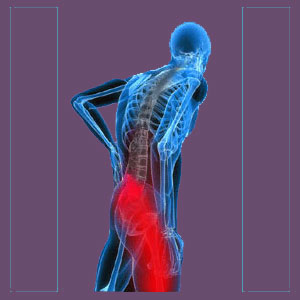
Piriformis cause or effect? This is an excellent question for diagnosticians to consider, since many cases of piriformis pain are consequences of another process, rather than independent conditions unto themselves. We see the confusion between cause and effect often in the greater healthcare industry and particularly in regards to back pain and general musculoskeletal pain. During our years of patient education and advocacy work in the piriformis pain sector, the trend towards confusion between cause and effect continues to grow and frightens us to our core.
Diagnosticians are trained to differentiate cause from consequence. However, when some of their theories out to be incorrect or financially-motivated, mistakes can happen. We observe these diagnostic blunders on a continual basis, with many patients forced to seek care for piriformis conditions that are obvious symptoms, rather than causations and other patients being directed to treatment for larger scale incidental abnormalities when the piriformis is the actual origin of pain.
This important dialog takes an in-depth look at the question of cause versus effect when it comes to piriformis pain syndromes.
Piriformis Cause or Effect? – Causes
Sometimes, the piriformis is the direct cause of pain. The piriformis can suffer injury or develop a functional imbalance with another muscle in its antagonistic pairing. Both of these conditions can create completely independent pain conditions in the piriformis muscle itself. Similarly, both conditions can cause the piriformis to fall into dysfunction and go into spasm, potentially clamping down on the sciatic and/or pudendal nerves, eliciting completely independent cases of piriformis syndrome. When implicated as a direct cause of pain, injury and imbalance have a fair chance of being accurate diagnostic conclusions.
Occasionally, there exists a congenital or developed defect in the piriformis or in one of its attaching tendons. In other cases, a defect might exist in one of the other structures of the lateral rotator group that causes the piriformis to work harder and suffer exacerbated stress leading to acute injury, RSI and pain. Congenital and developed defects hold less promise as being accurate explanations of pain, with less than half of the cases we see actually being causative, rather than resultant.
Often, the piriformis is verified as compressing the sciatic nerve, but no history or evidence of injury, imbalance or other pathology exists, making the condition idiopathic, but still originating in the muscle itself. This last diagnostic verdict is almost never sound and in our experience is virtually always an iatrogenic mistake.
Piriformis Pain Effects
In the examples given in the section above, we examine some circumstances where the piriformis might be the exclusive source of pain. In this section, we will provide similar examples that clearly show it to be a consequence and symptomatic expression, rather than a root causation.
Piriformis syndrome is definitely the condition that tends to be a result, rather than a causation. We see so many patients who obviously are suffering from piriformis compression of the sciatic nerve, but were mistakenly told that they must have suffered injury to the piriformis muscle to have caused this. Of course, they do not remember injuring themselves and do not demonstrate any evidence of trauma, yet the diagnosis is made nevertheless and treatment targeting the piriformis begins and eventually fails in every case.
Spinal nerve root compression can affect the structures that innervate the piriformis, potentially causing tingling, pain, numbness and weakness that might lead to sciatic nerve constriction.
We find a great number of cases of chronic pain to the direct result of regional ischemia that causes the piriformis to suffer oxygen deprivation and subsequent chronic spasming. The indicated treatment should never be directed at the muscle itself, but instead should address the psychoemotional reasons for the ischemic process to exist.
In other cases, we see obvious functional reasons of the piriformis to be in spasm, usually relating to lifestyle, positional and postural issues that are easily correctable and prevent the need for any treatment to be directed towards the piriformis itself. In essence, we correct the functional issue with behavior modification and the pain resolves organically.
Many muscular imbalances develop not due to functional issues in posture or activity, but instead due to some structural misalignment elsewhere in the anatomy. We see piriformis muscle imbalances occasionally being the direct consequences of atypical pelvic tilts, leg length differentials or other anatomical asymmetries.
Piriformis Cause or Effect Confusion
In our extensive clinical experience, it is far more likely that piriformis pain conditions are actually the direct results of some other causative process. We can make this statement based on not only diagnostic evidence, but the poor rates of successful piriformis treatment for most conditions that we suspect are being created by a larger process at work. Remember, curative care can not have a lasting positive effect when it is targeting the symptoms of a pain syndrome, rather than its underlying origin.
We would be shocked at the massive scale of misdiagnosis between cause and effect, were it not for our role as investigative patient advocates. We understand that so many doctors and therapists are using antiquated and incomplete models of pain to diagnose patient complaints. We also know sadly that the financial motivations of many care providers cause them to lose objectivity and compromise the scientific process out of desire to make money. We see so many patients herded into treatment regimens that are not needed, not indicated and basically idiotic from a scientific POV.
In closing, we strongly advise patients to remember a fact of virtually all piriformis diagnoses: They are made subjectively and without valid evidence of pathology. This type of diagnostic evaluation tends to attract many mistakes and results in the types of poor patient outcomes we see continuously. Do not become a victim. Learn what piriformis syndrome is and understand how it occurs to improve your chances for lasting symptomatic amelioration.
Piriformis Pain > What is Piriformis Syndrome? > Piriformis Cause or Effect





